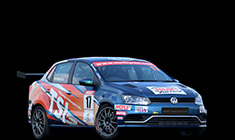News
Toyota Hilux : Our observations after a day of driving
On the open road, the Hilux AT is a fast pickup truck. Because of its big engine and the power on tap, you'll never be left wanting for punch.
Driving the Toyota Hilux 2.8L Diesel AT
The 2.8L diesel engine is proven and powerful. It is mated to a 6-speed AT:
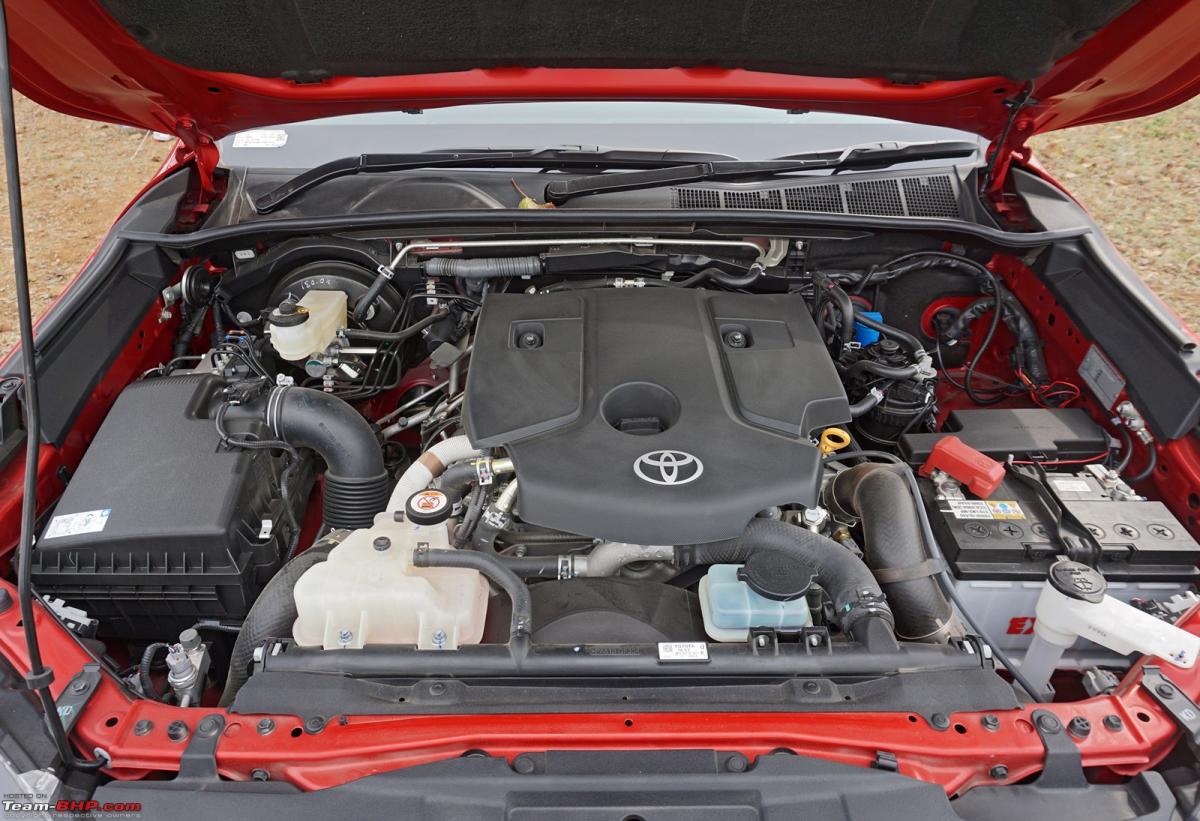
The Hilux gets the same 2.8L diesel engine that powers the Fortuner. This motor uses a variable geometry turbocharger and produces 201 BHP (@ 3,400 rpm) and 500 Nm of peak torque starting at a low 1,600 rpm (held till 2,800 rpm).
Toyota has equipped the Hilux with 3 driving modes - Normal, Economy and Power. These can be engaged by pressing the buttons on the center console. This is a superb way of customising the engine / throttle behaviour for prevailing driving conditions.
- Normal mode: If neither of the two (Eco or Power) modes is selected, the Hilux's engine runs in normal mode. This is a balance between economy & power.
- Eco mode: Press the ECO button on the center console and the power delivery is lower, with the throttle response dulled a bit. That said, because the engine is big & powerful, ECO mode is very useable in the city. It doesn't feel sluggish at all and there is more than enough grunt on tap to keep up with traffic. On a lighter note, having ECO mode on a big 2.8 diesel is in itself a contradiction.
- Power mode: Engage Power mode and you'll feel the throttle response to be sharper. The engine is very, very responsive in this driving mode. Acceleration times also noticeably improve.
The Hilux AT doesn't use a fancy dual-clutch transmission. Instead, a simple old-school torque-converter unit does the job. It has proven to be super reliable too. The Hilux AT isn't going to wow you with lightning-fast shifts or super smart logic, yet it will take you from point A to B in extreme convenience. The AT doesn't leave much room for complaint, but it doesn't give you anything to write home about either.
Press the brake pedal & hit the engine start button to fire her up. The AT's gear shifter is calm and composed. It remains that way on the move. However, on startup, the car suffers from cabin shake. At idle, the big 2.8L diesel is audible on the outside but shut the door & windows and the noise goes away. Cabin insulation is very good. Outside noise stays outside (note: engine noise is audible at higher revs).
Thanks to the torque converter, the way the vehicle moves from a standstill is smooth & seamless. In bumper-to-bumper traffic, the transmission's creep makes the Hilux crawl (without accelerator input). You can drive with just your foot on the brake pedal through bottlenecks. Peak torque is developed early @ 1,600 rpm, thus there's very little lag to speak of in the AT. Even at low rpms, the throttle is responsive. With a light foot in the city, upshifts happen at as low as ~1,500 rpm! This helps you cruise around with smooth shifts & low engine sound. The AT is keen to upshift and will quickly make its way up the ladder - at times, you'll see upshifts happening as soon as you take your foot off the accelerator (uncool for people like us who like engine braking). This is a big & powerful diesel, hence you don't need to give it heavy revs within the city. Soft inputs work best for normal commuting. However, press the accelerator halfway in, and shift quality definitely becomes perceptible. While the gearbox is still overall smooth, it's not an absolutely seamless shifting experience above 2,000 rpm. You'll know when the shifts are taking place. The engine & gearbox are also very responsive to throttle input. Some owners might feel that they are in fact too responsive! Even in normal mode, the engine revvs with a slight tap on the pedal. This is why you'll see the 2.8L revving unnecessarily when shifting between the lower gears. Solution? Eco mode.
Because of the dulled throttle response, the driving experience is smoothest in Eco. This is the mode you have to use within the city and - as mentioned before - it's still quick enough. Power mode for your daily commute? Fellow passengers will find it too jerky as the throttle is damn sharp. Drive around town in ECO mode and the experience is calm.
On the open road, the Hilux AT is a fast pickup truck. The engine remains responsive above 2,500 rpm. Because of its big engine and the power on tap, you'll never be left wanting for punch. Also, Power mode does bring an enhanced sense of urgency to the engine (although normal & ECO are useable on the highway too). The Hilux AT can be a lively intercity express. In kickdown, upshifts take place in the vicinity of 4,000 rpm. Don't drive it in a pedal-to-the-metal style though. Rather, you should build up speed gradually, else you'll get a lot of noise as the engine revvs & the gearbox drops a gear.
The Hilux AT is a very calm long-distance cruiser. Overtaking doesn't pose a problem at all. There's ample power and you have a great view of the road ahead. However, the 6-speed has that conventional AT lag (~1 second) between your putting the foot down and the gearbox downshifting. After that, she pulls away nicely. I did face one problem at high speeds here - due to conservative tuning and limited revs, at times if you jump out of the lane and want to overtake, the gearbox drops just one gear when you wish it had dropped two. The downshift logic isn't aggressive and you'll need to be patient in such a situation. Thus, on two-lane highways where you need to make quick moves, I'd recommend Power mode. It'll give you more punch. Another option is to prepare the car for overtaking (via a downshift using the paddle shifters) before the actual move. Overall, the gearbox logic is good. It is smooth, responds well to accelerator input and when driving hard, it knows when to hold on to gears as well.
The Hilux's S mode is very funny. Actually, it's not an S mode at all. Remember the D2 / D3 / D4 positions on older ATs which denote the max gear you are allowing it to shift up to? That's exactly what the Hilux AT does in 'S' mode. As an example, move the lever to S and you'll see S4 on the instrument cluster chosen by default. This doesn't mean that the current gear is no.4. Rather, that's the topmost gear that the AT will drive in. It will remain between 1 - 4. You can similarly choose to restrict the AT to 3rd; drive at 4,500 rpm all day long and the box won't upshift. This is unlike proper 'S' modes which move up the shift points and give the gearbox a more aggressive nature. No such thing here, Sport mode doesn’t necessarily result in a lower gear for every situation. The problem is, the layman won't realise this. He'll select 'S' mode thinking it's quicker and see 120 km/h at higher revvs in 4th (as S4 is chosen by default). Many people won't even know what they are supposed to do for easier cruising. Only an enthusiast will manually shift up to S5. This feature is very useful while off-roading.
Those looking for a real 'sport' mode can keep the gear lever in D, but select the engine's Power mode. The real S isn't on the gear shifter...it's on the center console!
Noise, Vibration & Harshness (NVH)
In terms of NVH, at idle, the diesel is audible on the outside but shut the doors & windows and the cabin is sufficiently insulated from that sound. At city rpms (2,000 rpm & under), engine noise is under control. Even above that, the 2.8L emanates more of a 'hum' rather than a 'clatter'. It's a typical big diesel hum that you won't see in smaller engines. Over 3,000 rpm, however, the engine does get noisy. And it's not got a nice note. Take the revv needle to 4,000 rpm and the diesel gets awfully loud. Passengers will ask you to back off.
Mileage & Fuel Economy
Toyota has not stated any official figure for the fuel efficiency of the Hilux. Due to the heavy kerb weight, large engine size & AT, don't expect FE to be high. Depending on traffic conditions and how happy your right foot is, you can expect anywhere between 7 - 10 km/l (tops) in the city. On the highway, figures should be more respectable, thanks to the 6th gear & low cruising rpms.
Suspension

Ride Comfort
The Hilux comes with an independent double wishbone suspension with coil springs at the front and a rigid axle with leaf springs at the rear. Leaf springs are a must for robust load-carrying applications. The Fortuner has a bumpy ride and in the Hilux, it's even worse. Things are still tolerable at the front, but on the back seat, it has that typical bumpiness experienced in UVs with leaf springs (especially when the loading bay is empty). At city speeds, the ride is jiggly, with even small road irregularities making themselves felt inside the cabin. At higher speeds, the bumpiness increases. On bad patches, the ride can get painful for those sitting in the rear seat. It can get jumpy on bad roads. There is simply no comparison with the ride comfort offered by SUVs like the XUV700. This suspension is built to carry cargo, not passengers. The ride could improve if you add weight to the loading bay. But the extra weight will bring down the performance and efficiency.
On the other hand, the suspension is super quiet and the large tyres allow the vehicle to deal with large potholes easily.
Handling & Dynamics
Straight-line stability at high speeds is solid. Grip levels from those fat 265 mm tyres are adequate too. However, when it comes to cornering, there is a lot of body roll, which is expected from a tall body-on-frame vehicle. What's more, if one gets ambitious and starts pushing the Hilux hard into corners, it will fishtail like any other pickup (due to the light rear end). Loading up the rear deck will help in keeping the vehicle planted. Drive it like a tall UV (and not a low-slung sedan), understand its limitations and you should be okay.
Steering
The Hilux comes with hydraulic power steering with variable flow control. It is heavy at parking or crawling speeds. This, along with a 6.4 m turning radius and the sheer length of the truck, means manoeuvering the truck in the city or parking in a tight spot will require a good deal of effort; those who are used to modern EPS systems will inevitably complain. Once the speedometer needle climbs, the steering does feel easier to operate. It also offers sufficient weight on the highway.
Braking
The Hilux comes with ventilated discs at the front and drums at the rear. I would have liked to see discs at the rear (considering the price of the vehicle) and the fact that the Fortuner gets discs all-round. While they seemed to have enough power we didn't get the chance to perform any brake tests from high speeds. The Hilux gets 265 mm tyres which aid overall braking performance. Even then, one must remember that the truck has a gross weight of almost 3 tons and hence, it’s a good idea to maintain a big gap from the car in front. Yes, like most other body-on-frame cars, the Hilux nose dives under braking. ABS, EBD and Brake Assist are a part of standard equipment.
Niggles & Problems
This generation of the Hilux is in its eighth year and Toyota will have ironed out any problems that might have arisen. The engine and transmissions have been around for a long time and have proven extremely durable and reliable. We did not face any problems in our test car and do not expect owners to do so either. However, as is always the case, we strongly recommend extended warranty coverage.
4x4 & Offroading
The Hilux is an extremely capable vehicle when the road ends. It is equipped with electronic drive control (shift-on-the-fly) four-wheel drive system with 3 electronically switchable modes:
- 2H - Power is sent only to the rear wheels. This mode should be used for normal on-road driving (street and highway).
- 4H (high range) - Power is sent to all four wheels. This mode should be used for driving on gravel, sand, mud and other low-traction surfaces.
- 4L (low range) - 4x4 with multiplied torque. This mode should be used for low-speed driving in extreme offroad conditions.
You can shift between the 2H and 4H modes on the go. Of course, getting in or out of 4L mode is only possible when the vehicle is stationary. The engaged mode is displayed on the MID.
Further, the Hilux also gets an auto limited slip differential, electronic differential lock, hill assist control (up/down) and tyre angle monitor. Coming to the stats, the truck has an approach angle of 29 degrees, a departure angle of 26 degrees and a water-wading depth of 700 mm.
We drove the Hilux inside the Rajaji Tiger Reserve on a track prepared by Offroad Junkies headed by BHPian Tejas@perioimpl. We drove over loose surfaces, some uphill & downhill sections, off-camber obstacles, axle twisters and did some water wading.



The Hilux tackled everything that was thrown at it with ease. Nowhere did it get stuck or scrape its undercarriage. We made a few observations over the course. The approximate crawling speed with DAC engaged is 5 km/h. The crawl in 4L is good and the vehicle moves inch by inch and manoeuvers over the terrain without complaining. The DAC (hill descent control) when operated for a long duration on hill slopes to control crawling speed, gets heated up and throws up a warning and disengages. This may be due to brakes being used by the system continuously along with the weight of the vehicle.
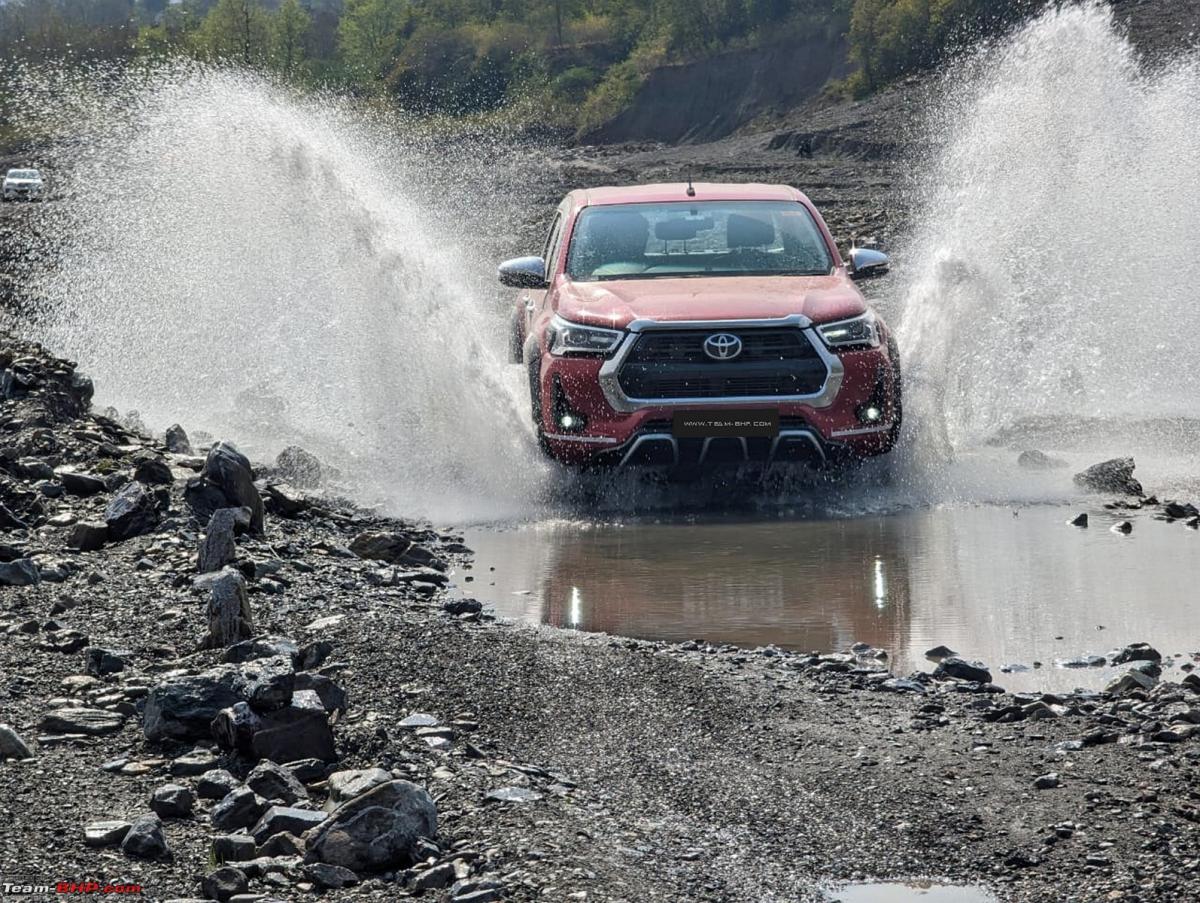
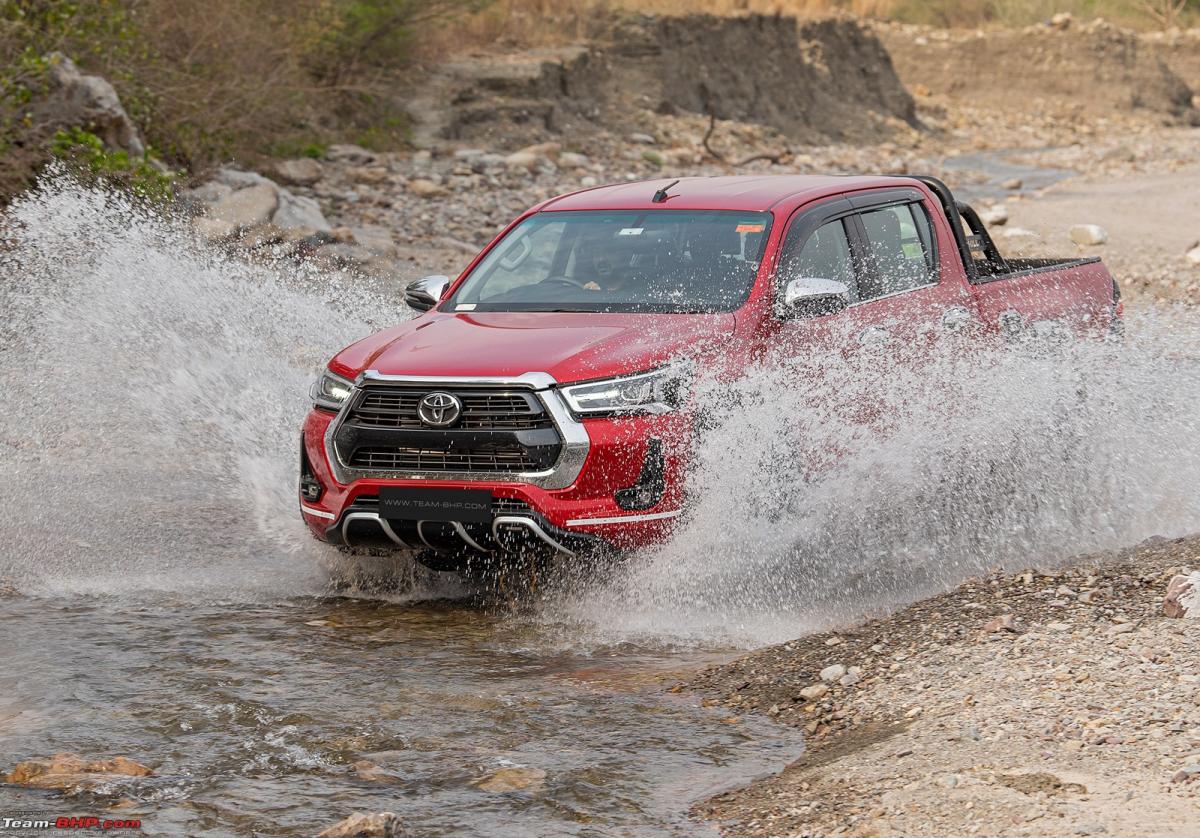
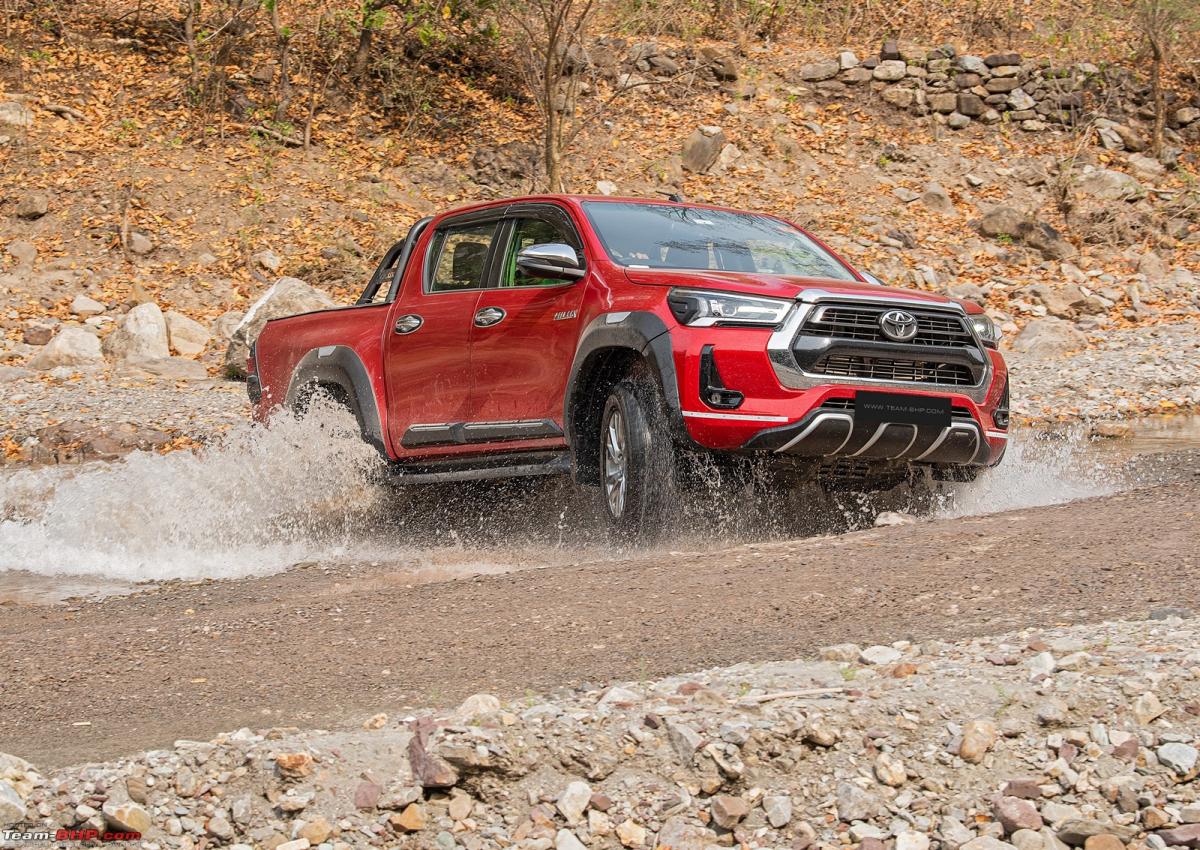
Continue reading the discussion on the Toyota Hilux on our forum.














